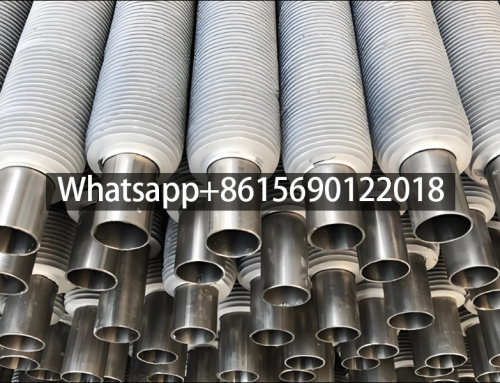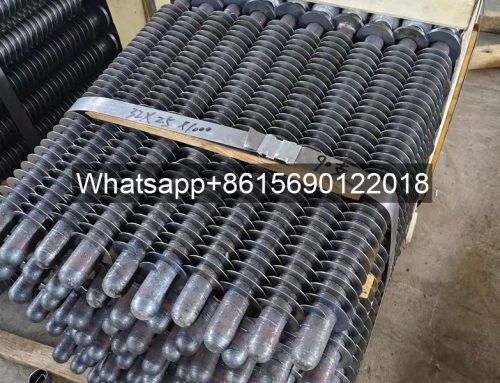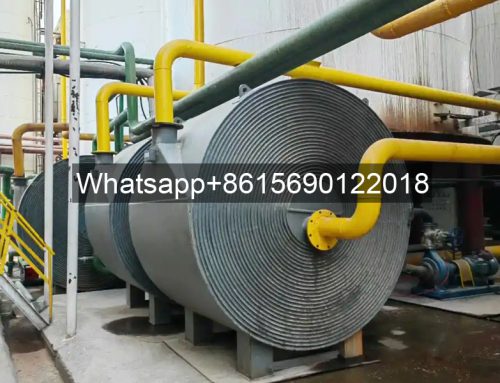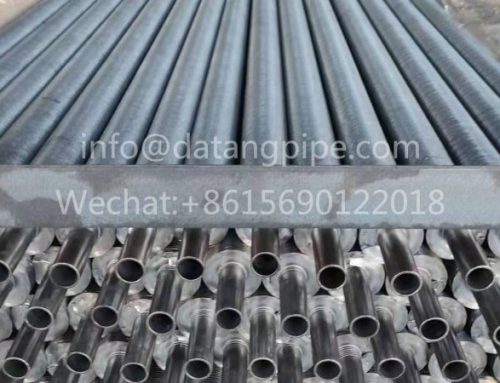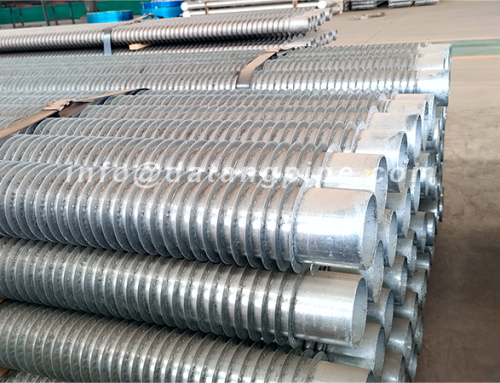How Does a Steam Heat Exchanger Work?
The operating principle of a steam heat exchanger is primarily based on the release of latent heat through steam phase change, achieving efficient heat transfer. Its core process can be divided into three stages:
1. Steam Condensation and Heat Release Stage
After entering the heat exchanger, high-temperature, high-pressure steam comes into contact with the lower-temperature heated medium, rapidly condensing into liquid water and releasing a large amount of latent heat of vaporization (1 kg of saturated steam condenses approximately 2000 kJ, five times the heat required to raise the temperature of the same mass of water by 100°C). The heat transfer efficiency in this stage is far superior to sensible heat transfer and is the core advantage of steam heat exchange.
2. Heat Transfer Stage through the Wall
The heat released by the steam is transferred from the high-temperature side to the low-temperature side through the heat exchange wall (such as the tube bundle, plates, or fins). The wall material (stainless steel, carbon steel, etc.) and structural design (e.g., corrugated plates, spiral fins) directly impact heat transfer efficiency. For example, finned heat exchangers increase the heat transfer coefficient by over 30% by increasing the heat transfer area.
3. Heat Absorption Stage of the Heated Medium
Heat is transferred through the wall to the heated medium (e.g., water, air, or oil), achieving uniform temperature increase through forced or natural convection. This process allows precise temperature control by adjusting steam pressure to meet industrial process requirements.
Key Auxiliary Systems
Exhaust System: Removes non-condensable gases (such as air) to prevent air film formation that reduces heat transfer efficiency.
Drain: Discharges condensate promptly to prevent accumulation that affects heat transfer.
Turbulence Enhancement Design: For example, the corrugated plates or spiral fins of plate heat exchangers can increase the heat transfer coefficient to 8000 W/(m²·°C).
Different types of heat exchangers (such as shell and tube, plate, and fin) are optimized for different scenarios through structural optimization, but all follow the aforementioned phase change heat transfer principle.
The following are several common steam heat exchanger types and their characteristics:
1. Shell and Tube Heat Exchanger Exchanger
Structural Features: Consists of a shell, tube bundles, tube sheets, and baffles. Steam flows on the shell or tube side, while fluid flows in the opposite direction on the other side.
Applications: Widely used in the petrochemical and power industries, such as condensers in thermal power plants.
Advantages: Strong pressure resistance, suitable for high-temperature and high-pressure conditions, with a heat transfer efficiency of 600-700 kcal/(m²·h·°C)
2. Plate Heat Exchanger
Structural Features: Corrugated metal plates are stacked to form the flow channel, allowing alternating flow of hot and cold fluids. Plate spacing is 2-5mm.
Applications: Food processing (such as milk pasteurization) and the pharmaceutical industry. The volume is only 1/2-1/4 of that of a shell-and-tube exchanger.
Advantages: Heat transfer coefficient as high as 5800 W/(m²·K), with a heat transfer area per unit volume of 250-1500 m²/m³.
3. Finned Tube Heat Exchanger
Structural Features: Fins are added to the outside of metal tubes to increase the heat transfer area. A common combination is copper tubes with aluminum fins.
Applications: Air-cooling systems such as home air conditioners and cold storage, increasing the heat transfer area per unit volume by 4-5 times.
Advantages: Energy efficiency ratios exceeding 3.5, reducing power consumption by 20%.
4. Spiral Plate Heat Exchanger
Structural Features: Two steel plates are rolled together to form a spiral flow path, allowing the hot and cold fluids to flow in opposite directions.
Applications: Chemical and metallurgical industries, handling high-viscosity or scaling-prone media.
Advantages: Turbulence intensity is increased by 80%, with a heat transfer coefficient of 8,000-13,600 W/(m²·°C).
5. Double-Pipe Heat Exchanger Heat Pipe Heat Exchanger
Structural Features: Consists of concentric tubes, with steam flowing through the inner tube or an annular interlayer.
Applications: Laboratory equipment, small refrigeration systems. Simple structure but low efficiency.
6. Heat Pipe Heat Exchanger
Structural Features: Sealed tubes filled with a working fluid, transferring heat through an evaporation-condensation cycle.
Applications: Waste heat recovery, aerospace equipment, and extreme temperature resistance (-196°C to 1200°C).
The above types can be selected based on operating requirements. For example, shell-and-tube is preferred for high-temperature and high-pressure environments, while plate-type is preferred for space constraints.
Which type of steam heat exchanger is the most energy-efficient?
In a comparison of steam heat exchangers’ energy efficiency, spiral-wound tube heat exchangers and plate heat exchangers demonstrate the most outstanding overall energy efficiency. A detailed analysis is as follows:
1. Spiral-wound tube heat exchanger
Energy-saving principle:
The spiral structure enhances turbulence, improving heat transfer by 300%-500%. The volume is reduced to just one-fifth of traditional equipment, and measured steam energy consumption can be reduced by 15%.
Technical advantages:
The two-pass tube design improves heat transfer efficiency by 40%-60% and reduces pressure drop by 15%.
The silicon carbide-graphene composite coating achieves a thermal conductivity of 250 W/(m·K) and improves anti-fouling performance by 70%.
Applicable applications:
High-temperature and high-pressure operating conditions (such as waste heat recovery in chemical plants), particularly suitable for industrial applications requiring long-term operation.
2. Plate Heat Exchanger
Energy-Saving Principle:
Corrugated plates create dense flow channels, resulting in a heat transfer coefficient as high as 5800 W/(m²·K) and a heat transfer area per unit volume of 250-1500 m²/m³.
Technical Advantages:
Counterflow design achieves heat recovery efficiency ≥96% and condensation efficiency up to 98%.
Modular structure enables rapid maintenance and reduces fouling by 70%.
Applicable Applications:
Small- to medium-scale thermal energy conversion (e.g., food sterilization, pharmaceutical manufacturing), low-pressure steam systems (≤0.4 MPa).
3. Energy Efficiency Comparison with Other Types
Shell-and-Tube Heat Exchangers:
Traditional designs have a heat transfer coefficient of 8,000-13,600 W/(m²·°C), but are bulky and require high maintenance. Optimization (such as spirally grooved tubes) is needed to improve energy efficiency.
Fin-and-Tube Heat Exchangers:
High air-side heat transfer efficiency, but the steam side is prone to scaling, requiring regular cleaning. Long-term energy efficiency is lower than spiral-wound heat exchangers.
Spiral-wound heat exchangers offer significant energy savings in high-temperature and high-pressure environments, while plate heat exchangers are more suitable for low-pressure and small- to medium-scale applications.


